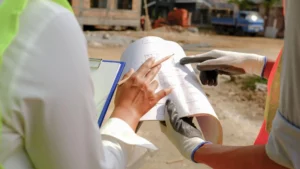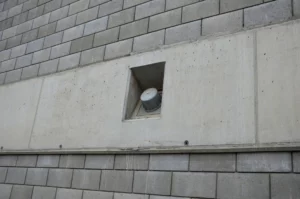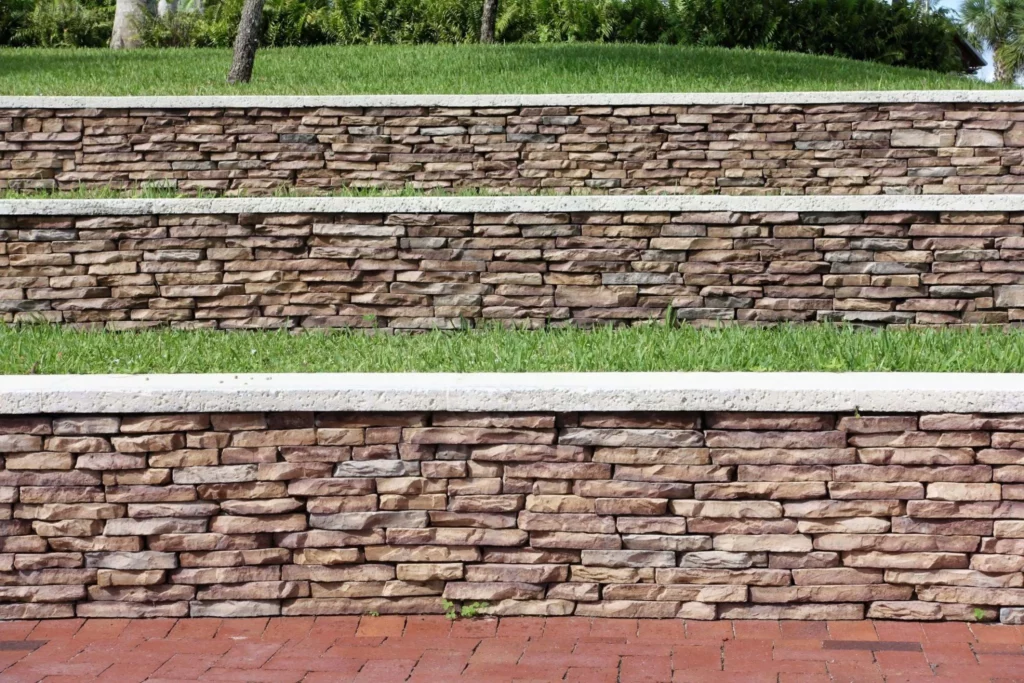Retaining walls are structures designed to hold back soil or other materials from moving down a slope or incline. They can be used to create terraced gardens, level out uneven ground, or simply add visual interest to your landscape. Pavers are a popular choice for building retaining walls because they are easy to work with, durable, and come in a variety of colors and textures. In this article, we will go over the steps involved in building a small retaining wall with pavers or how to build a small retaining wall with pavers.
Planning and Preparation:
Before starting your project, it’s important to plan and prepare the area where your retaining wall will be built. Here are some things to consider before build a small retaining wall with pavers:
- Measure the length and height of your desired retaining wall to determine how many pavers you’ll need.
- Check local building codes and regulations to see if you need a permit to build your retaining wall.
- Make sure the area where you’ll be working is clear of debris and obstructions.
- Mark the corners of the area where your retaining wall will be built using stakes and twine or spray paint.
- Use a spirit level to ensure the ground is level and even. If the ground slopes, you may need to dig trenches to create a level base.
- Determine the depth of your retaining wall by measuring the distance between the bottom of the lowest course (layer) of pavers and the top of the highest course. This will depend on the height of the wall you want to build and the size of the pavers you’re using. Generally, each course should be about 2-3 inches thick.
- Calculate the number of pavers you’ll need by multiplying the length of your wall by the width of each paver. Add 10% to this total to account for cuts and waste.
- Choose a paver color and texture that complements your home’s exterior and blends well with the surrounding landscaping.
- Purchase enough sand and gravel to cover the base of the area where your retaining wall will be built. You’ll also need a layer of compacted gravel to provide drainage behind the wall.
- Gather the necessary tools, including a shovel, trowel, level, string line, pliers, and a rubber mallet.
Excavation and Foundation Work
- Digging the Trench: A well-dug trench is fundamental for the wall’s stability. The trench’s depth, typically around 6-8 inches, varies based on the intended wall height.
- Establishing a Strong Foundation: Fill the trench with gravel, compacting it meticulously to create a stable and enduring foundation for the retaining wall.
Building the Retaining Wall
- Placing the Initial Course of Pavers: Begin by placing the first row of pavers along the trench. Apply adhesive between the pavers to ensure their stability.
- Interlocking the Pavers for Stability: As you progress, lay subsequent rows of pavers, staggering them to achieve optimal stability. Interlocking the pavers enhances the wall’s resilience.
- Maintaining Level Alignment: Regularly employ a level to guarantee the wall’s alignment. This iterative process ensures that each layer is perfectly horizontal.
Ensuring Proper Drainage
- Understanding Drainage Importance: Proper drainage prevents water accumulation behind the wall, safeguarding its stability over time.
- Installing Drainage Pipes: Place perforated drainage pipes behind the wall, surrounded by gravel. This arrangement directs water away from the wall’s vicinity.
Backfilling and Compaction
- Filling Behind the Wall: Fill the space behind the wall with soil, ensuring gradual and thorough backfilling. This step prepares the wall for the final compaction process.
- Compacting the Soil: Utilize a compactor to tightly pack the soil. Effective compaction minimizes the risk of future settling or tilting.
Final Flourishes
- Incorporating Cap Blocks: For a polished appearance, introduce cap blocks to the top row of pavers. These blocks serve as both a functional edge and a visual finishing touch.
- Landscaping Around the Wall: Enhance the wall’s visual appeal by incorporating plants, mulch, or decorative stones around its base.
Longevity and Maintenance
- Regular Inspection Practices: Routine inspections are vital to detecting any signs of damage or movement early on. Swift action during this stage can prevent larger issues down the line.
- Addressing Settling Issues: If settling occurs, especially within the initial months, gently raise the affected area, add soil as needed, and compact it to restore stability.
Finishing Touches:
With your retaining wall complete, there are a few finishing touches to consider.
- Compact the soil behind the wall to prevent erosion and ensure stability.
- Plant grass seed or low-maintenance ground covers like sedum or thyme to help hold the soil in place and add beauty to your landscape.
- Install a drip irrigation system or soaker hose to help plants establish themselves and grow healthily.
- Consider adding decorative elements like address blocks, stepping stones, or garden statues to enhance the look and functionality of your retaining wall.
Conclusion(how to build a small retaining wall with pavers)
The construction of a small retaining wall with pavers marries practicality and aesthetics. By diligently following this guide(how to build a small retaining wall with pavers), you can create a resilient, visually appealing addition to your outdoor space that endures over time.
Congratulations! With careful planning and execution, you’ve successfully built a beautiful and functional retaining wall using pavers. Enjoy the improved appearance and functionality of your outdoor space for years to come.
For more informative blogs or articles visit our website.
Frequently Asked Questions
Q1: What purpose does a retaining wall serve?
A: Retaining walls prevent soil erosion, create level spaces, and enhance landscaping aesthetics.
Q2: Can I undertake a DIY retaining wall project?
A: Certainly, armed with proper guidance, materials, and tools, building a small retaining wall is feasible.
Q3: Are there various paver options available?
A: Yes, you can choose from a range of paver materials, sizes, and designs to suit your preferences.
Q4: What depth should the foundation trench have?
A: Typically, the trench depth is 6-8 inches, dependent on the desired height of the wall.
Q5: Can the retaining wall also function as seating?
A: While primarily intended for support, adding cap blocks can create a flat surface suitable for seating.
